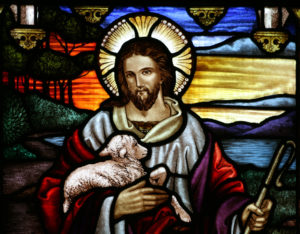Next, we turn our attention to the fossil record. As stated in Part I, the fossil record does illustrate an increase in complexity over time, from single-celled to multi-celled to more complicated life, as evolution predicts. But does the rest of the fossil record match up with the evolutionary model? Continue reading
Author Archives: Scott Dunkley
Evolution, Part II: What Genetics Really Tells Us
While the genetic evidence at first seems like one of the strongest arguments in favor of evolution, it’s ultimately the theory’s largest Achilles heel. Ironically, the more science has learned about DNA and genetics, the more apparent evolution’s challenges have become. Continue reading
Evolution, Part I
Logic & Light has touched on the issue of evolution in several posts. But since this topic is of such importance, a more in-depth, multi-part analysis is warranted.
Evolution is a pivotal issue for several reasons. First, it is the very foundation of the naturalistic worldview. According to Richard Dawkins, Darwin’s philosophy made “it possible to be an intellectually fulfilled atheist1.” If evolution is not true, naturalism is unquestionably false. Continue reading
The Historical Argument, Part II
 In part one, we briefly reviewed the biblical and extra-biblical testimony concerning the identity of Jesus. Now we turn our attention to several other key historical facts that further validate that evidence.
In part one, we briefly reviewed the biblical and extra-biblical testimony concerning the identity of Jesus. Now we turn our attention to several other key historical facts that further validate that evidence.
The Empty Tomb
Historically speaking, the empty tomb is a fact. Continue reading
The Historical Argument, Part I
 The Historical Argument represents the sixth step in Logic & Light’s systematic case for the Christian God. It seeks to demonstrate, using sound historical facts from both biblical and extra-biblical testimony, that Jesus was divine and actually resurrected after His crucifixion. If the fact of Jesus’ resurrection is established, then Christianity is, without a doubt, true. We have addressed one form of the Historical Argument previously (Six Facts About Jesus: Part I, Part II, Part III), but we will cover a bit more ground here. Continue reading
The Historical Argument represents the sixth step in Logic & Light’s systematic case for the Christian God. It seeks to demonstrate, using sound historical facts from both biblical and extra-biblical testimony, that Jesus was divine and actually resurrected after His crucifixion. If the fact of Jesus’ resurrection is established, then Christianity is, without a doubt, true. We have addressed one form of the Historical Argument previously (Six Facts About Jesus: Part I, Part II, Part III), but we will cover a bit more ground here. Continue reading
The Biblical Argument
 In this fifth installment, we continue building the case for belief in the Christian God. The Cosmological and Teleological Arguments demonstrate a logical, scientific foundation for a general belief in God. The Anthropological and Covenantal Arguments begin steering us directly to the Christian God. We now continue down that path with the Biblical Argument. Continue reading
In this fifth installment, we continue building the case for belief in the Christian God. The Cosmological and Teleological Arguments demonstrate a logical, scientific foundation for a general belief in God. The Anthropological and Covenantal Arguments begin steering us directly to the Christian God. We now continue down that path with the Biblical Argument. Continue reading
The Covenantal Argument
 With the previous Cosmological and Teleological Arguments, we began building the foundation for a rational belief in God. Then the Anthropological Argument began to narrow our focus from “a god” to the specific Judeo-Christian God. We now continue building that case with the Covenantal Argument. Continue reading
With the previous Cosmological and Teleological Arguments, we began building the foundation for a rational belief in God. Then the Anthropological Argument began to narrow our focus from “a god” to the specific Judeo-Christian God. We now continue building that case with the Covenantal Argument. Continue reading
The Anthropological Argument
 Logic & Light has previously explored the powerful evidence for God offered by the Cosmological and Teleological Arguments. And while these arguments offer a strong, logical, and scientific basis for belief in God, they do not tell us much about who God is or which religion has the correct view of Him. So, we now turn our attention to those arguments that begin to build the case for a belief in the specific God of the Bible. Continue reading
Logic & Light has previously explored the powerful evidence for God offered by the Cosmological and Teleological Arguments. And while these arguments offer a strong, logical, and scientific basis for belief in God, they do not tell us much about who God is or which religion has the correct view of Him. So, we now turn our attention to those arguments that begin to build the case for a belief in the specific God of the Bible. Continue reading
The Teleological Argument – Part II (Critical Responses)
Read Part I here
As with the Cosmological Argument, we will now examine the primary claims against the Teleological Argument… Continue reading
The Teleological Argument – Part I
Read Part II Here
After examining the strength of the Cosmological Argument, we now turn our attention to the Teleological Argument or the Argument from Design. The Teleological Argument is just as compelling as the Cosmological and when combined with it, provide a very strong basis for belief in God.
And just like with the Cosmological Argument, it is firmly rooted in what we know to be scientifically true. It is not born of ignorance or some God of the Gaps reasoning. Rather it is entirely fact-based and uses the naturalists’ supposed ally, scientific discovery, to argue against Naturalism. It was, in fact, largely the strength of the Teleological Argument that converted well-known atheist philosopher, author, and debater Anthony Flew to a belief in God, as he details in his 2007 book “There is a God.”
The Teleological Argument Summarized
The Teleological Argument can be summarized as follows:
- The laws of physics, chemistry, and biology appear non-random and “finely tuned” to allow for the universe’s existence and to produce life
- Both the universe and life exhibit “specified complexity”
- Apparent fine-tuning and specified complexity indicate a purposeful design to the universe
- A purposeful design requires an ultimate Designer, which must be God




